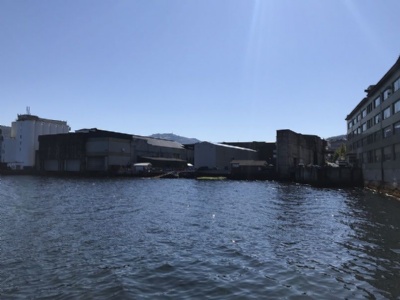Bergen - Bruno
When the Germans occupied Norway in the spring of 1940 they could move their submarine bases closer to the convoi routes used by the allies on their way to Soviet union. In 1941, construction of a submarine base/bunker began in Bergen. When it was ready, it consisted of a total of seven hems, three dry docks, three water docks and one that served as a storage room. When the base was ready, it was named Bruno and became the German 11th submarine flotilla base. From here the submarines embarked on long missions. After completing missions, the submarines returned to the base for maintenance, repairs and bunkering. After the allied landing in Normandy in June 1944, the German submarine bases along the Atalntic coast were threatened. Therefore, parts of the German submarine fleet were transffered from French bases to bases on in Norway, including Bergen. Bruno therefore had to expand but it was never big enough to house the increased numbers of submarines that arrived from France.
The increased number of submarines also led to the base becoming a priority bomb target for the British air force. In 1944, the base was heavily attacked by more than 150 aircraft. Several bombs hit the base but thanks to its massive construction, the damage was limited and only two submarines were slightly damaged. Unfortunately, a nearby school was hit, which resulted in the death of about 300 civilians, including children. Another raid was carried out in the same month, but due to bad weather, the aircraft could not find the base. The third and final attack took place in January 1945 when the base was attacked with heavy bombs (i.e. Tallboys) which were designed to penetrate massive structures. Three of the bombs hit the bunker but only one managed to penetrate and damaged two submarines and killing 20 Germans. The base surrendered on May 8, 1945.
Current status: Partly preserved/demolished with monument (2019).
Location: 60°23'28.71"N 05°17'11.81"E
Get there: Car.
Follow up in books: Blair, Clay: Hitler’s U-Boat War: The Hunted: 1942-1945 (1996).




In 2019, there were a number of companies/industries in the base area and only authorised persons seem to have access. However, it no longer seems to be a military area as it was just a few years ago. Only two of the original hems remain, but it is still possible to distinguish the base, although not as clearly as the hems of Trondheim (Dora) and those of the French Atlantic coast. Right next to the base is the school that was accidentally bombed and there is a memorial.